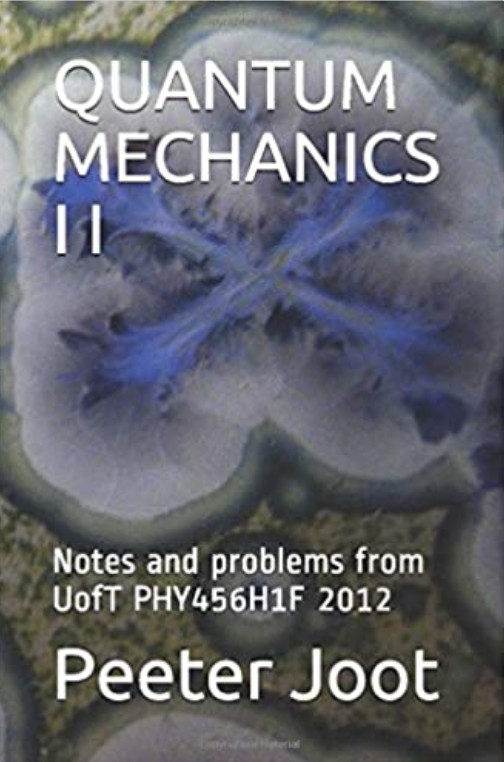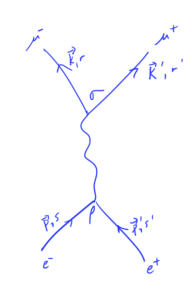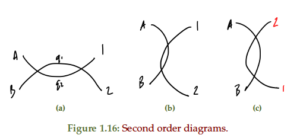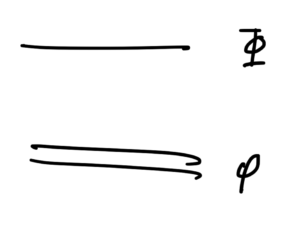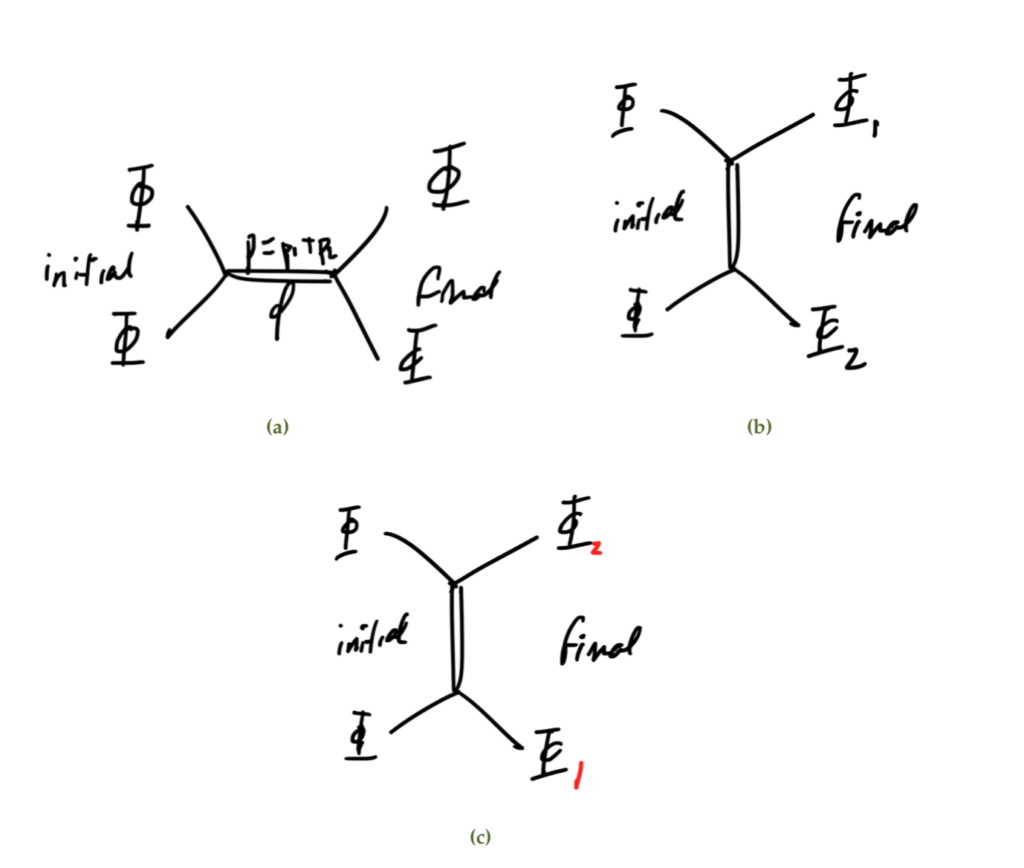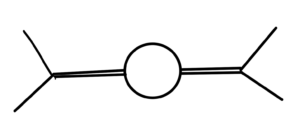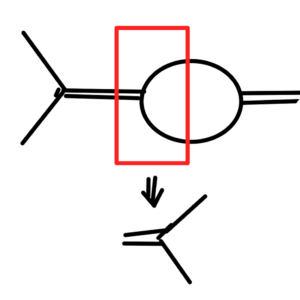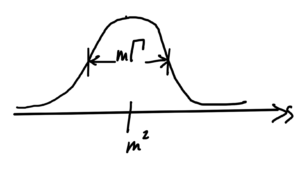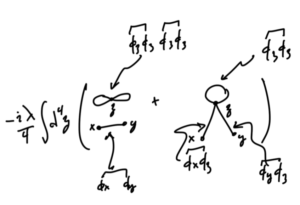PHY456, Quantum Mechanics II was one of the first few courses that I did as part of my non-degree upper year physics program. That was a self directed study part time program, where I took most of interesting seeming fourth year undergrad physics courses at UofT.
I was never really pleased with how my QMII notes came out, and unlike some of my other notes compilations, I never made a version available on amazon, instead just had the PDF available for free on my Quantum Mechanics page. That page also outlines how to get a copy of the latex sources for the notes (for the curious, or for the zealous reader who wants to submit merge requests with corrections.)
Well, over the last month or so, I’ve gradually cleaned up these QMII notes enough that they are “print-ready” (no equations overflowing into the “gutter”, …) , and have gone ahead and made it available on amazon, for $10 USD. Like my other class notes “books”, this is published using amazon’s print on demand service. In the likely event that nobody will order a copy, there is no upfront requirement for me to order a minimal sized print run, and then be stuck with a whole bunch of copies that I can’t give away.
There are still lots of defects in this set of notes. In particular, I seem to have never written up my problem set solutions in latex, and subsequently lost those solutions. There’s also lots of redundant material, as I reworked a few of the derivations multiple times, and never went back and purged the crud. That said, they are available as-is, now in paper form, as well as a free PDF.
I’ll share the preface, and the contents below.
Preface.
These are my personal lecture notes for the Fall 2011, University of Toronto Quantum mechanics II course (PHY456H1F), taught by Prof. John E Sipe.
The official description of this course was:
“Quantum dynamics in Heisenberg and Schrodinger Pictures; WKB approximation; Variational Method; Time-Independent Perturbation Theory; Spin; Addition of Angular Momentum; Time-Dependent Perturbation Theory; Scattering.”
This document contains a few things
- My lecture notes.
- Notes from reading of the text \citep{desai2009quantum}. This may include observations, notes on what seem like errors, and some solved problems.
- Different ways of tackling some of the assigned problems than the solution sets.
- Some personal notes exploring details that were not clear to me from the lectures.
- Some worked problems.
There were three main themes in this course, my notes for which can be found in
- Approximate methods and perturbation,
- Spin, angular momentum, and two particle systems, and
- Scattering theory.
Unlike some of my other course notes compilations, this one is short and contains few worked problems. It appears that I did most of my problem sets on paper and subsequently lost my solutions. There are also some major defects in these notes:
- There are plenty of places where things weren’t clear, and there are still comments to followup on those issues to understand them.
- There is redundant content, from back to back lectures on materials that included review of the previous lecture notes.
- A lot of the stuff in the appendix (mostly personal notes and musings) should be merged into the appropriate lecture note chapters. Some work along those lines has been started, but that work was very preliminary.
- I reworked some ideas from the original lecture notes to make sense of them (in particular, adiabatic approximation theory), but then didn’t go back and consolidate all the different notes for the topic into a single coherent unit.
- There were Mathematica notebooks for some of the topics with issues that I never did figure out.
- Lots of typos, bad spelling, and horrendous grammar.
- The indexing is very spotty.
Hopefully, despite these and other defects, these notes may be of some value to other students of Quantum Mechanics.
I’d like to thank Professor Sipe for teaching this course. I learned a lot and it provided a great foundation for additional study.
Phy456 (QM II) Contents:
- Copyright
- Document Version
- Dedication
- Preface
- Contents
- List of Figures
- 1 Approximate methods.
- 1.1 Approximate methods for finding energy eigenvalues and eigenkets.
- 1.2 Variational principle.
- 2 Perturbation methods.
- 2.1 States and wave functions.
- 2.2 Excited states.
- 2.3 Problems.
- 3 Time independent perturbation.
- 3.1 Time independent perturbation.
- 3.2 Issues concerning degeneracy.
- 3.3 Examples.
- 4 Time dependent perturbation.
- 4.1 Review of dynamics.
- 4.2 Interaction picture.
- 4.3 Justifying the Taylor expansion above (not class notes).
- 4.4 Recap: Interaction picture.
- 4.5 Time dependent perturbation theory.
- 4.6 Perturbation expansion.
- 4.7 Time dependent perturbation.
- 4.8 Sudden perturbations.
- 4.9 Adiabatic perturbations.
- 4.10 Adiabatic perturbation theory (cont.)
- 4.11 Examples.
- 5 Fermi’s golden rule.
- 5.1 Recap. Where we got to on Fermi’s golden rule.
- 5.2 Fermi’s Golden rule.
- 5.3 Problems.
- 6 WKB Method.
- 6.1 WKB (Wentzel-Kramers-Brillouin) Method.
- 6.2 Turning points..
- 6.3 Examples.
- 7 Composite systems.
- 7.1 Hilbert Spaces.
- 7.2 Operators.
- 7.3 Generalizations.
- 7.4 Recalling the Stern-Gerlach system from PHY354.
- 8 Spin and Spinors.
- 8.1 Generators.
- 8.2 Generalizations.
- 8.3 Multiple wavefunction spaces.
- 9 Two state kets and Pauli matrices.
- 9.1 Representation of kets.
- 9.2 Representation of two state kets.
- 9.3 Pauli spin matrices.
- 10 Rotation operator in spin space.
- 10.1 Formal Taylor series expansion.
- 10.2 Spin dynamics.
- 10.3 The hydrogen atom with spin.
- 11 Two spins, angular momentum, and Clebsch-Gordon.
- 11.1 Two spins.
- 11.2 More on two spin systems.
- 11.3 Recap: table of two spin angular momenta.
- 11.4 Tensor operators.
- 12 Rotations of operators and spherical tensors.
- 12.1 Setup.
- 12.2 Infinitesimal rotations.
- 12.3 A problem.
- 12.4 How do we extract these buried simplicities?
- 12.5 Motivating spherical tensors.
- 12.6 Spherical tensors (cont.)
- 13 Scattering theory.
- 13.1 Setup.
- 13.2 1D QM scattering. No potential wave packet time evolution.
- 13.3 A Gaussian wave packet.
- 13.4 With a potential.
- 13.5 Considering the time independent case temporarily.
- 13.6 Recap.
- 14 3D Scattering.
- 14.1 Setup.
- 14.2 Seeking a post scattering solution away from the potential.
- 14.3 The radial equation and its solution.
- 14.4 Limits of spherical Bessel and Neumann functions.
- 14.5 Back to our problem.
- 14.6 Scattering geometry and nomenclature.
- 14.7 Appendix.
- 14.8 Verifying the solution to the spherical Bessel equation.
- 14.9 Scattering cross sections.
- 15 Born approximation.
- A Harmonic oscillator Review.
- A.1 Problems.
- B Simple entanglement example.
- C Problem set 4, problem 2 notes.
- D Adiabatic perturbation revisited.
- E 2nd order adiabatically Hamiltonian.
- F Degeneracy and diagonalization.
- F.1 Motivation.
- F.2 A four state Hamiltonian.
- F.3 Generalizing slightly.
- G Review of approximation results.
- G.1 Motivation.
- G.2 Variational method.
- G.3 Time independent perturbation.
- G.4 Degeneracy.
- G.5 Interaction picture.
- G.6 Time dependent perturbation.
- G.7 Sudden perturbations.
- G.8 Adiabatic perturbations.
- G.9 WKB.
- H Clebsh-Gordan zero coefficients.
- H.1 Motivation.
- H.2 Recap on notation.
- H.3 The \(J_z\) action.
- I One more adiabatic perturbation derivation.
- I.1 Motivation.
- I.2 Build up.
- I.3 Adiabatic case.
- I.4 Summary.
- J Time dependent perturbation revisited.
- K Second form of adiabatic approximation.
- L Verifying the Helmholtz Green’s function.
- M Mathematica notebooks.
- Index
- Bibliography
